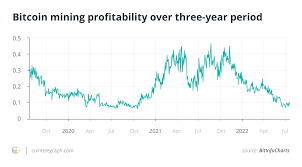Medicare and Medi-Cal are government-run health insurance programs, but each is designed to serve specific populations:
Medicare is federal health insurance for those 65 or older as well as younger people who have end-stage renal disease or certain disabilities.
Medi-Cal is California's Medicaid plan. It's a state-federal program designed to serve people whose income and resources are limited, regardless of their age or health status.
What’s covered under each program?
Medicare
Medicare includes a wide range of health services, but the specific coverage you receive depends on which Medicare plans you sign up for, according to Medicare.gov:
Medicare Part A is Original Medicare’s hospital insurance and is offered through the federal government.
Medicare Part B is Original Medicare’s medical insurance and is offered through the federal government. It pays for doctor and other health care provider services, outpatient care, some preventive services and durable medical equipment.
Medicare Advantage (also known as Medicare Part C) is a bundled alternative to Original Medicare. Offered through Medicare-approved private insurance companies, it provides hospital and medical coverage as well as, in most cases, prescription drug coverage. Medicare Advantage plans must offer at least as much as Original Medicare, and sometimes these plans come with additional benefits.
Medicare Part D is Medicare’s prescription drug insurance offered through Medicare-approved private insurance companies.
Medigap is supplemental insurance designed to reduce your out-of-pocket expenses while on Original Medicare. Depending on the plan you choose, it may help pay for certain copays or coinsurance, deductibles, excess charges and other expenses that Medicare doesn’t cover.
Medi-Cal
Medi-Cal offers comprehensive health services and supplies through its choice of 21 health plans, including:
Outpatient visits to a doctor, including checkups.
Emergency care.
Preventive and wellness care.
Hospitalization.
Prescription medications.
Maternity and newborn care.
Laboratory services, including blood tests.
Management of chronic conditions.
Mental health services.
Substance abuse services.
Pediatric services, including vision and oral care.
Physical therapy and other rehabilitative supplies and services.
In-home care.
Transportation services.
Dental care.
What do Medicare and Medi-Cal cost?
Medicare
Medicare costs depend on which part you’re enrolled in, according to Medicare.gov:
Medicare Part A: Usually has a $0 premium, but it has a $1,600 deductible per benefit period (which begins the day you enter the hospital or skilled nursing facility and ends the day you have been out for 60 days in a row) as well as copayments that start after 60 hospitalized days.
Medicare Part B: Has a minimum premium of $164.90 per month in 2023, a deductible of $226 in 2023, and, for most services, 20% coinsurance.
Medicare Advantage: Costs vary depending on the plan and insurer you choose.
Medicare Part D: Costs vary depending on the plan and insurer you choose.
Medigap: Costs vary depending on the plan type and insurer you choose.
Medi-Cal
Many people who qualify for Medi-Cal can use its benefits for free, with no premiums, copayments or other out-of-pocket expenses. Some children on Medi-Cal have premiums of no more than $13 monthly, with a family cap of $39 per month.
Looking for Unbiased Medicare Advice?
Chapter saves people over $1,000/year on their Medicare plans. You can reach them at (855)480-7438
Chapter (mobile image)
Who’s eligible for each program?
Medicare
To be eligible for all Medicare plan types, you need to be either:
65 or older.
Younger than 65 and disabled.
Suffering from end-stage kidney disease.
Noncitizens may be eligible for Medicare Part A if they are:
Legal permanent U.S. residents, 65 or older who have worked in the country for at least 10 years in jobs where they (or their spouses) paid Medicare payroll taxes.
Immigrants 65 or older with no work history who have lived in the country legally for at least five years.
Legal permanent U.S. residents who are disabled, younger than 65 and meet the same Social Security Disability Insurance requirements as U.S. citizens.
Medi-Cal
Medi-Cal is available based on certain income requirements, and you can also qualify if you're:
65 or older.
Younger than 21.
Pregnant.
Blind.
Disabled.
Living in a skilled-nursing or intermediate-care facility.
On refugee status.
The parent or caretaker of an eligible child.
Have been screened for cervical and/or breast cancer.
If you’re enrolled in CalFresh, Supplemental Security Income/State Supplementary Payment (or SSI/SSP), CalWorks, Refugee Assistance, Foster Care or the Adoption Assistance Program, you’re eligible as well.
Children may sometimes qualify for Medi-Cal even if their parents don’t, and adult members of the same household may not always have the same eligibility.
Can I enroll in Medicare and Medi-Cal together?
If you’re 65 or older or are younger than 65 and have certain disabilities — and you live in California — you may be eligible to enroll in Medicare and Medi-Cal if your income qualifies. Medi-Cal may even pay your Medicare premiums when you’re enrolled in both programs.
When you’re covered by both programs, your Medicare plan(s) will cover most of your everyday medical services and prescription medications. Then, Medi-Cal would cover certain long-term supportive care that Medicare doesn’t cover such as community-based services and nursing home care.
How do you sign up for Medicare and Medi-Cal?
Medicare
You can sign up for Medicare during your initial enrollment period (when you first become eligible for Medicare), the general enrollment period (Jan. 1 to March 31) or if you qualify for one of Medicare’s special enrollment periods. To enroll in Parts A and B:
Apply online for Medicare here.
Apply in person at any Social Security office.
Apply by phone with any Social Security office at 800-772-1213.
Apply by phone with the Railroad Retirement Board at 877-772-5772 if you or your spouse was employed by a railroad.
If you apply for Social Security when you become eligible for Medicare (your initial enrollment period), you’ll automatically be enrolled in Medicare Part A and will have the option to enroll in Part B coverage as well.
You can compare and sign up for Medicare Advantage, Medicare Part D and/or Medigap plans in your area by using Medicare’s online tool here.
Medi-Cal
You can sign up for Medi-Cal through Covered California at any time; there are no specific enrollment periods. To apply:
In person: Visit your local county office. You can locate your closest county office here.
Online: Visit the Covered California website.
By mail: Fill out an application online, print it and mail it. You can find instructions here.
By phone, fax or email: For instructions, contact your local county office or call Covered California at 800-300-1506.
If you have additional questions about Medicare, visit Medicare.gov or call 800-MEDICARE (800-633-4227, TTY 877-486-2048).





